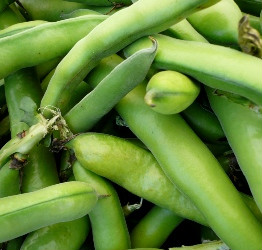Winter & Spring Produce
Parsley
Curly Parsley: Curly, fringed leaves, a natural breath freshener, parsley nicely adorns any dish. Keep wet or store in an air-tight bag. Italian Parsley: Look for notable flat leaves which distinguishes it as Italian Parsley. Italian Parsley is a Mediterranean favorite that is delicious in soup, vegetables, meats and as garnish. Remember to keep wet…
Read MoreLettuce
Butter Lettuce: The leaves are thin and soft with a silky almost buttery feel. They have a sweet, mild flavor with less prominent veins than iceberg. Butter lettuce is sometimes referred to as cabbage lettuce and includes common varieties like Boston and Bibb lettuce. Escarole Lettuce: Escarole is a lettuce that is often used in…
Read MoreLimes
The nutritional benefits of limes do not differ very much from those of lemons. They are both excellent sources of vitamin C, B6, potassium, folic acid, flavonoids and the outstanding phytochemical, limonene. Limes add flavor and nutrition to salsa and guacamole – in addition it helps the avocado from turning brown.
Read MoreLemons
The commercial lemon industry got its start during the California Gold Rush to help in the prevention of the Vitamin C disease scurvy. Lemons are great for juicing and turning into lemonade. To get the most juice from a lemon, first bring the fruit to room temperature and roll on a hard surface while pressing…
Read MoreLeeks
Choose leeks that have dark green leaves. They will then be straight, thick-leafed and very crisp with white bulb-ends. Avoid picking leeks with yellow, brown, wilted or slime-spotted tops. Leeks are used in soups, salads, stir-fry’s and are great in omelets.
Read MoreKohlrabi
Also called cabbage turnip, the two varieties of kohlrabi, green and purple, should both have medium-sized firm roots. The coloring should be light for the green variety and deep for the purple variety. The greens for both varieties should be crisp and firm. Leaves can be eaten raw in salads or steamed. The bulbs can…
Read MoreKale
Kale is great for decoration, can be prepared as you would spinach and is a great source of dietary fiber. Blanching, steaming and stir-frying are all good cooking methods for kale. It cooks a little slower than spinach. Once called borecole, the word kale was bestowed by the Scots who are the champion kale consumers.…
Read MoreTurnips
Turnips: Turnips are very low in Saturated Fat and Cholesterol. They’re also a good source of Vitamin B6, Folate, Calcium, Potassium and Copper, and a very good source of Dietary Fiber, Vitamin C and Manganese. Use sliced or cubed in stews or salads. Japanese or White Turnips: This turnip is tender, mild, sweet, and crunchy. Select…
Read MoreFennel
The fennel bulb contains virtually all of the usable meat. Smaller fennel bulbs are more tender and less fibrous than larger bulbs. Store fennel in a plastic bag, in the high-humidity crisper section of the refrigerator for no more than 3 to 4 days. Fennel loses its flavor quickly so it’s best to use it…
Read MoreFava Beans
Also called English bean, Windsor bean and horse bean, good-quality fava beans will be firm, smooth-skinned and very pale to medium green in color. The tough skin must be peeled and discarded. Use cooked or raw in salads or with dip.
Read More









